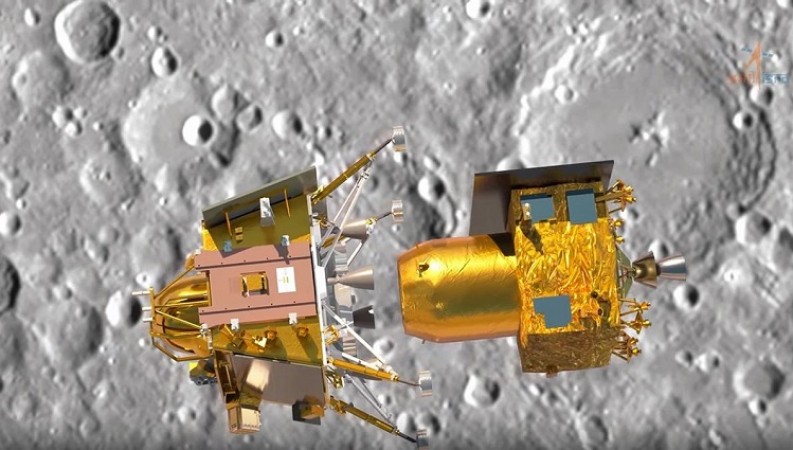
The Indian Space Research Organisation (ISRO) has achieved a remarkable feat by relocating the Propulsion Module (PM) of Chandrayaan-3 from its lunar orbit to an orbit around Earth. This shift comes following the PM's successful completion of its initial mission objectives.
Confirming the PM's fulfillment of its primary goal, which involved transporting the lander module from the Geostationary Transfer Orbit (GTO) to the final lunar polar circular orbit and achieving the intended separation, ISRO shared details of this milestone achievement.
Post-separation, ISRO proceeded to operate the Spectropolarimetry of the HAbitable Planet Earth (SHAPE) payload within the PM. Originally planned for a three-month operation during the PM's mission lifespan, the optimized orbital maneuvers left over 100 kilograms of fuel after more than a month in lunar orbit.
Leveraging Excess Fuel for Extended Missions
With a surplus of fuel at their disposal, ISRO made the strategic decision to utilize it for gathering additional data pertinent to future lunar missions. This move also serves as a demonstration of operational strategies for forthcoming sample return missions.
To facilitate ongoing Earth observation through the SHAPE payload, ISRO tactically repositioned the PM to a suitable Earth orbit. The meticulous plan prioritized collision avoidance with both the Moon’s surface and Earth’s Geosynchronous Equatorial Orbit (GEO) belt, which orbits at 36,000 kilometers and lower.
The PM's meticulously planned return trajectory was slated for October 2023, involving precise maneuvers to adjust its altitude and orbit period, eventually guiding it away from the gravitational influence of the Moon by November 10.
As of now, the PM is orbiting Earth, having crossed its first perigee on November 22 at an altitude of 1.54 lakh kilometers, with an inclination of 27 degrees over a span of 13 days. ISRO has assured that based on orbit predictions, there is no imminent threat posed to operational Earth-orbiting satellites.
Continued Operations and Strategic Planning
ISRO continues to operate the SHAPE payload during Earth's visibility, even conducting a specialized operation during a solar eclipse on October 28, 2023.
The flight dynamics team at ISRO has played a pivotal role in developing analysis tools and software modules essential for trajectory planning and execution. These efforts encompass gravity-assisted fly-bys and ensuring a controlled termination of the PM's life to prevent debris upon its conclusion on the Moon's surface.
Outlining the primary results of the return maneuvers performed on the PM for future missions, ISRO highlights the planning and execution of the trajectory back from the Moon to Earth, software development for this maneuver, validation processes, gravity-assisted fly-bys around celestial bodies, and ensuring controlled termination to prevent debris creation at the end of the PM's life cycle on the Moon.
Chandrayaan-3's mission initially aimed to showcase a soft landing near the lunar south pole and conduct experiments through instruments on the 'Vikram' lander and 'Pragyan' rover. Launched on July 14, 2023, the spacecraft achieved a historic Vikram lander touchdown on August 23, deploying the Pragyan rover for continuous scientific operations throughout one lunar day.